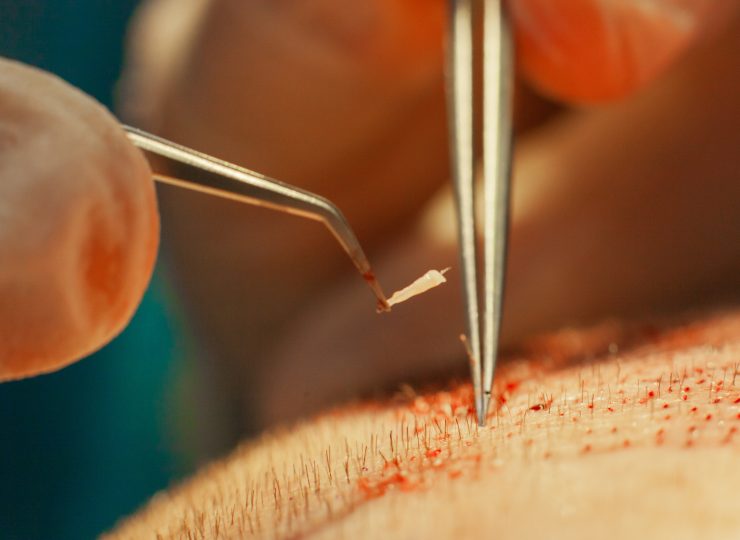
Hair Transplantation
Hair transplantation is a natural and permanent solution to the problem of thinning and baldness caused by hair loss. With the hair transplantation operation, genetically resistant hair follicles are collected from the nape of the patient and transplanted into the channels opened in the areas where baldness or thinning occurs. Hair transplant operation is a microsurgical operation performed under local anesthesia. For this reason, it should be performed in a clinical environment and accompanied by an anesthesiologist.
Basic Stages of Hair Transplantation
Hair transplant operation is performed in three basic stages
- A group of hair follicles.
The hair follicles are individually retrieved using the FUE motor once the donor area has been prepped for the operation. It is crucial that the roots are not harmed in the interim. An average of 2–3 hairs can be found inside each of these roots, or grafts.
- Channels opening
The depth and size of opening the channels appropriately for the location has an impact on how quickly hair grows. It is important to open a channel that is appropriate for the size and length of the transplanted hair follicle. To get the most realistic perspective, the canal angle should also be properly adjusted.
- Adding roots to the channels that have been opened
The hair transplant procedure is finished at the last stage when the harvested roots are put one by one at 40-45 degree angles in the opening channels.
FUE is the Most Modern Hair Transplant Method.
The most up-to-date technology in hair transplantation is the FUE technique, which is a micro-surgical process conducted under local anesthetic, in which the roots are harvested with the use of a micro motor. This procedure is the cornerstone for all hair transplantation methods.
All methods for hair transplantation follow the same fundamental procedures. A canal is opened, roots are taken, and the taken roots are then planted in the opened channel. The device used to remove the roots, the medical devices needed to open the channels, and the actual transplanting process are what set different hair transplantation methods apart from one another. As a result, different names have been given to these hair transplantation techniques.
Procedures for Hair Transplantation
The following hair transplantation techniques are used now with success. Every technique is used by being specifically chosen in accordance with the requirements and needs of the patient. The method that the doctor and the patient agree upon as being most beneficial.
Robotic Hair Surgery
The hair transplant robot gathers hair follicles in the robotic hair transplant procedure. The harvested roots are manually planted into the channels once they have been opened by a hair transplant robot.
Sapphire FUE hair Transplant
The metal slit is replaced with a special sapphire tip pen at the grooving stage of the Sapphire FUE hair transplantation technique. These sapphire tips, which enable the opening of smaller microchannels and so speed up healing and lessen crusting, are what distinguish the approach from others.
DHI Hair Transplant (Unshaven)
In the DHI hair transplantation method, which is also called direct hair transplantation, the process of opening and transplanting the canal using a medical pen called choi is performed at the same time. Since the hair follicles to be transplanted will remain outside for a shorter period of time, the grafts are more likely to remain healthy.
Normal FUE Hair Transplant
In the FUE hair transplantation method, hair follicles collected and separated using a micro motor are transplanted into manually opened channels.

